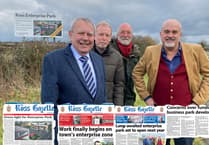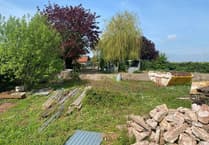HEREFORDSHIRE planners have refused an application to build a three-bedroom bungalow on land adjacent to a former hotel.
Applicant Henry Danter, explained that the new bungalow would be built on land adjacent to the former Doward Hotel at Crocker’s Ash near Whitchurch and would be used to house the manager of the nearby leisure park at Symonds Yat.
Mr Danter stated that the proposal was driven by a desire to provide his partner with a living arrangement that optimises their daily commute, adding this would reduce carbon emissions.
Mr Danter’s partner is currently living in the 18th century Grade II listed hotel – “but this is becoming more uneconomical as the building deteriorates and becomes more expensive to heat effectively”, it explains.
She “cannot afford the upkeep of the decaying building with the increasing maintenance costs and the forever rising energy costs”, it adds – whereas the new bungalow “will be far more thermally efficient and would cost less to heat”.
Visually, the custom-built house “would be hidden behind trees and would not harm the classic picturesque idiom of the façade being viewed from afar”.
The statement adds: “There had previously been ten timber chalets on the other side of the hotel, and when these were removed, Mr Danter was advised by the planning officer that there would be scope for another dwelling on the site of the cabins along with the two houses at the bottom of the drive”, his statement explains.
But Whitchurch and Ganarew parish council objected to the proposal as being “outside the agreed settlement boundary”.
And Herefordshire Council’s ecology officer Ana Coxixo said her assessment showed the building would “have a likely significant effect on the River Wye Special Area of Conservation and Wye Valley Woodlands”.
These points convinced planning officers to refuse permission who stated: “In the absence of any exceptional circumstances this application represents unacceptable development in the open countryside. This form of development is considered to be inherently unsustainable, and contrary to the Herefordshire Local Plan.”





Comments
This article has no comments yet. Be the first to leave a comment.